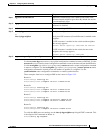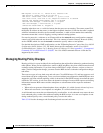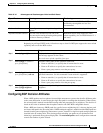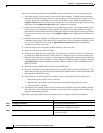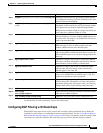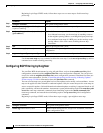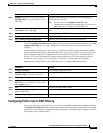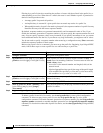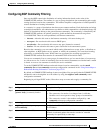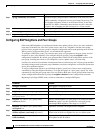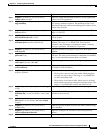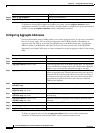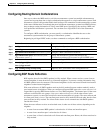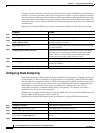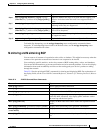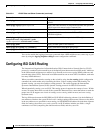
35-57
Cisco ME 3400 Ethernet Access Switch Software Configuration Guide
OL-9639-06
Chapter 35 Configuring IP Unicast Routing
Configuring BGP
Configuring BGP Community Filtering
One way that BGP controls the distribution of routing information based on the value of the
COMMUNITIES attribute. The attribute is a way to groups destinations into communities and to apply
routing decisions based on the communities. This method simplifies configuration of a BGP speaker to
control distribution of routing information.
A community is a group of destinations that share some common attribute. Each destination can belong
to multiple communities. AS administrators can define to which communities a destination belongs. By
default, all destinations belong to the general Internet community. The community is identified by the
COMMUNITIES attribute, an optional, transitive, global attribute in the numerical range from
1
to 4294967200. These are some predefined, well-known communities:
• internet—Advertise this route to the Internet community. All routers belong to it.
• no-export—Do not advertise this route to EBGP peers.
• no-advertise—Do not advertise this route to any peer (internal or external).
• local-as—Do not advertise this route to peers outside the local autonomous system.
Based on the community, you can control which routing information to accept, prefer, or distribute to
other neighbors. A BGP speaker can set, append, or modify the community of a route when learning,
advertising, or redistributing routes. When routes are aggregated, the resulting aggregate has a
COMMUNITIES attribute that contains all communities from all the initial routes.
You can use community lists to create groups of communities to use in a match clause of a route map.
As with an access list, a series of community lists can be created. Statements are checked until a match
is found. As soon as one statement is satisfied, the test is concluded.
To set the COMMUNITIES attribute and match clauses based on communities, see the match
community-list and set community route-map configuration commands in the
“Using Route Maps to
Redistribute Routing Information” section on page 35-92.
By default, no COMMUNITIES attribute is sent to a neighbor. You can specify that the COMMUNITIES
attribute be sent to the neighbor at an IP address by using the neighbor send-community router
configuration command.
Beginning in privileged EXEC mode, follow these steps to create and to apply a community list:
Command Purpose
Step 1
configure terminal Enter global configuration mode.
Step 2
ip community-list community-list-number
{permit | deny} community-number
Create a community list, and assign it a number.
• The community-list-number is an integer from 1 to 99 that
identifies one or more permit or deny groups of communities.
• The community-number is the number configured by a set
community route-map configuration command.
Step 3
router bgp autonomous-system Enter BGP router configuration mode.
Step 4
neighbor {ip-address | peer-group name}
send-community
Specify that the COMMUNITIES attribute be sent to the neighbor at
this IP address.
Step 5
set comm-list list-num delete (Optional) Remove communities from the community attribute of an
inbound or outbound update that match a standard or extended
community list specified by a route map.
Step 6
exit Return to global configuration mode.



